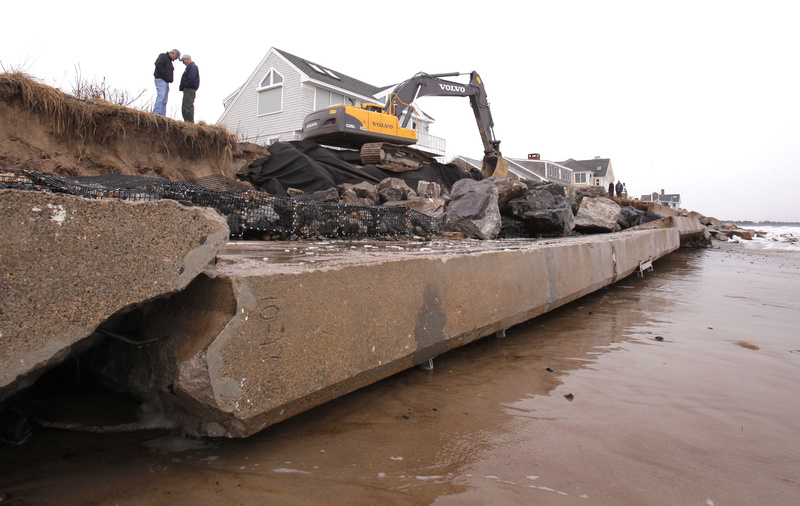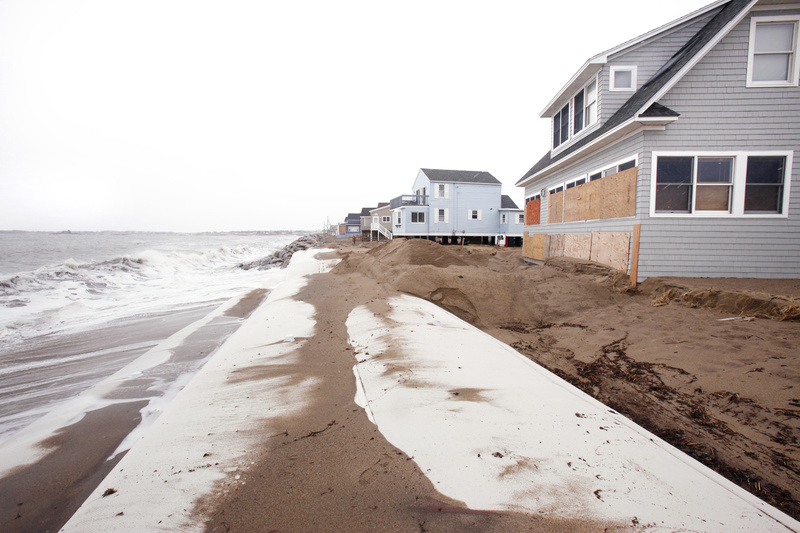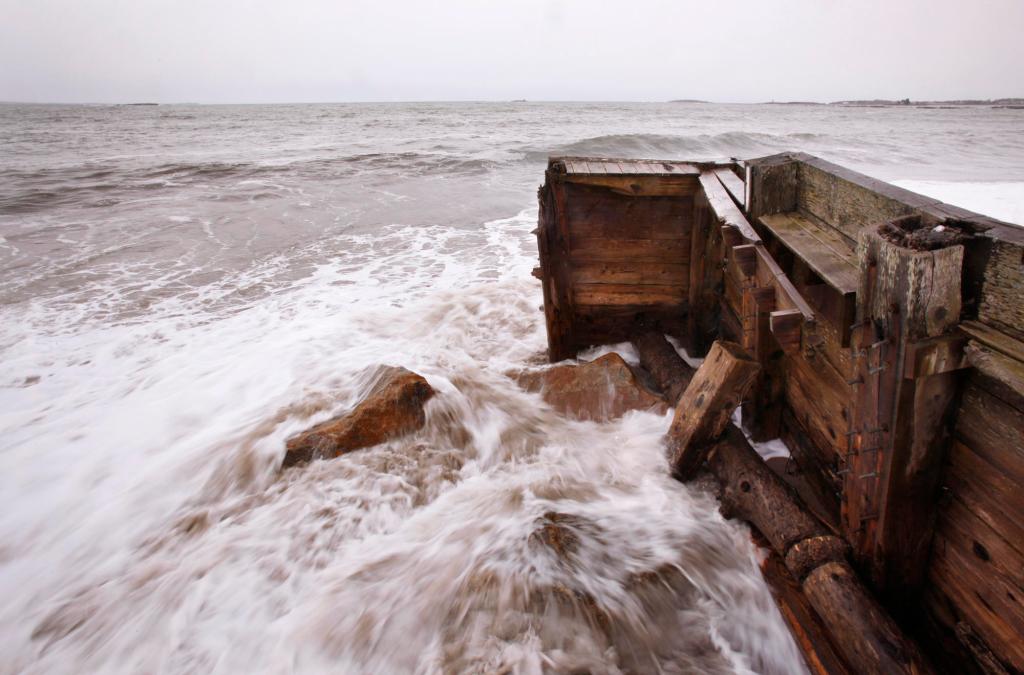A week after wind, rain, surf and tides savaged the coast of southern Maine, state officials are poised to declare an emergency that would open the door to millions of dollars in federal aid.
But federal dollars can’t replace the miles of eroded beach and thousands of downed trees. That will take years.
“I was just shocked with what I saw,” said Rocky Furman, who lives in the Drake’s Island section of Wells. “I’ve never seen the beach so low.”
Furman described how the beach used to slope up to a protective seawall but now slopes down, creating a depression.
A short walk down Wells Beach, the storm left its mark in other ways.
A section of concrete seawall 150 feet long toppled onto the beach after its foundation was pounded by surf. Workers used a front-end loader to line up boulders to protect the shoreline and two nearby houses.
On Kennebunk Beach, stones piled up at the base of a seawall that usually rises from sandy beach.
The perpetual action of waves will gradually rebuild the beaches and cover the coarse stones with fine sand, but it will take time.
“Every beach everywhere got hit, whether they were developed beaches with seawalls or natural beaches with dunes,” said Stephen Dickson, marine geologist for the Maine Geological Survey.
“It takes a couple years for a beach to recover from a large hit like this,” he said. “After the 2007 Patriots Day storm, most of the beaches in Maine were back to normal after two years.”
Last week’s storm eroded natural dunes 10 to 15 feet in most places. As beach sand that extends out from the shore diminishes, surf breaks closer to shore, doing more damage, Dickson said.
The damage was caused by a confluence of weather forces.
It started with torrential rain, which soaked the thawed ground and weakened root systems that held down tall evergreens.
Then, powerful winds built over the ocean. Winds gusting to more than 70 mph on Maine’s coast hammered trees to the ground and snapped others.
Those winds drove ocean water into the coast, creating a 4.37-foot tidal surge, just a couple inches less than the record set in 1947. Waves built to 28 feet at the Portland buoy in Casco Bay.
Those waves hit at the worst time, an astronomical high tide, and not just one. The storm raged over several high tides, each time scarring dunes and pounding the defenses that coastal residents had built.
“That trifecta of conditions hit all the beaches and seawalls hard for a period of two days or more,” Dickson said. “In my experience, it’s probably something along the lines of a 25-year storm in terms of flooding and wave action.”
The surf washed away the sand atop a 300-foot sand tube implanted at Camp Ellis to ward off the worst erosion. But the 6-foot-diameter “geotube” held, and it held in place much of the sand and shore behind it.
The storm did $5 million worth of damage in Maine, far more than the $1.6 million threshold needed to declare a disaster, making cities, towns and the state eligible for reimbursement, said Ginnie Ricker, deputy director of the Maine Emergency Management Agency.
York County alone had more than $2.7 million worth of damage, said Joyce Kelley, deputy director of the York County Emergency Management Agency.
“Our two hardest-hit towns are Ogunquit and York,” Kelley said. “You have road damage that has to be repaired, debris that has to be picked up.”
Cumberland County had $1.4 million worth of damage.
Officials with the Federal Emergency Management Agency are scheduled to tour York, Cumberland and Sagadahoc counties Monday to verify the damage estimates.
The federal government will reimburse 75 percent and the state will reimburse 15 percent, for repairs such as rebuilding washed-out roads, replacing culverts and cleaning up trees and other debris from roadways.
The reimbursements will be a relief to cities and towns, which had been counting on savings from this mild winter to compensate for other budget problems, said Portland’s spokeswoman, Nicole Clegg.
Adding the city’s $400,000 in storm cleanup and repair costs to rising expenses and declining state aid would make a difficult situation worse, she said.
Staff Writer David Hench can be contacted at 791-6327 or at:
dhench@pressherald.com
Send questions/comments to the editors.





Success. Please wait for the page to reload. If the page does not reload within 5 seconds, please refresh the page.
Enter your email and password to access comments.
Hi, to comment on stories you must . This profile is in addition to your subscription and website login.
Already have a commenting profile? .
Invalid username/password.
Please check your email to confirm and complete your registration.
Only subscribers are eligible to post comments. Please subscribe or login first for digital access. Here’s why.
Use the form below to reset your password. When you've submitted your account email, we will send an email with a reset code.